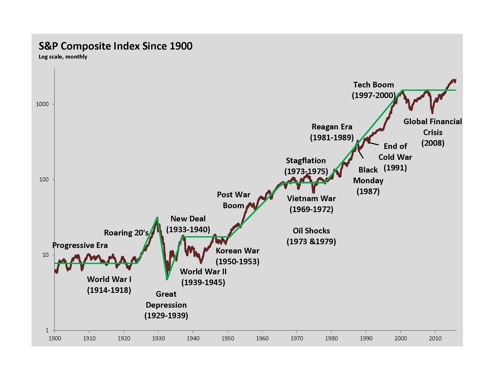May 17, 2016 Lesjak Planning Perspective
May 17, 2016
Lesjak Planning Perspective
Market pundits, financial news stations, and even major brokerage firms seem to be trying to create a self-fulfilling prophecy by continuing to warn of a coming financial Armageddon. For nearly the past year we have been pounded continuously about the coming crash as a result of (take your pick): The Presidential race, banking crisis, recession, war in the Middle East, inflation, and the crash of oil prices.
This negative reporting has not gone unnoticed by investors. Record setting withdrawals from equities in the tens of billions of dollars contributed to substantial declines both last fall and the start of this new year. The old axiom of “Sell in May and go away” has been taken to heart by many as evidenced by the last three week’s consecutive declines in the market averages.
However, there continues to be investors that are buying at these declines and have returned the market indices to within 3% of their all-time highs reached one year ago.
As we drive through our towns, you have no doubt been inconvenienced by the multitude of road and bridge construction projects in progress. Stop in any home improvement store and the traffic is way up. Home remodeling is on a tear. Try calling a contractor to get a job done quickly and you will most likely find they are quite busy.
Negative news continues to be the main driver of print and media sales so we don’t expect a let up in that reporting. It is important as investors to sometimes take a step back from the negativity and look at the bigger picture and include the positives that may not be so evident and are ignored in the media. Most importantly, diversify.

Graph Source: Yale Department of Economics
Investors often forget that the Wall Street financial markets are a discounting barometer.
They price in the current negative or positive events in the world and then look forward to the next couple of calendar quarters of expected economic direction. If all of the popular media venues know all the negatives and those negatives are continuously featured, then 90%+ of our problems are already baked into stock prices. So if investors are waiting for all of these negatives to be addressed before buying, they are completely ignoring history and the market’s role as a discounting barometer. While values may still go down from this point or trade sideways for a while longer, it is not possible with any certainty, to pinpoint the duration or timing of a market move. An often quoted line from Warren Buffet may again be wise to heed: “Be fearful when others are greedy and be greedy when others are fearful.”
The attached graph of the S & P 500 Index from 1900 to the present helps to illustrate our belief that we are still in a long term bull market in stocks. Notice how the index plateaus in a sideways fashion after substantial multi-year advances. The current plateau began in 2000 and if the S & P follows its historical pattern, a new leg to the upside will follow.
Although the economy has moved forward very slowly in this recovery, it is positive. Recent numbers have retail purchases up more than expected, housing starts are up, and gasoline consumption is increasing as more motorists take to the highways. Paychecks have statistically increased by 4.3% annually over the past three years and help wanted signs are abundant at restaurants, machine shops, and trucking companies.












































About the author
Lesjak Planning